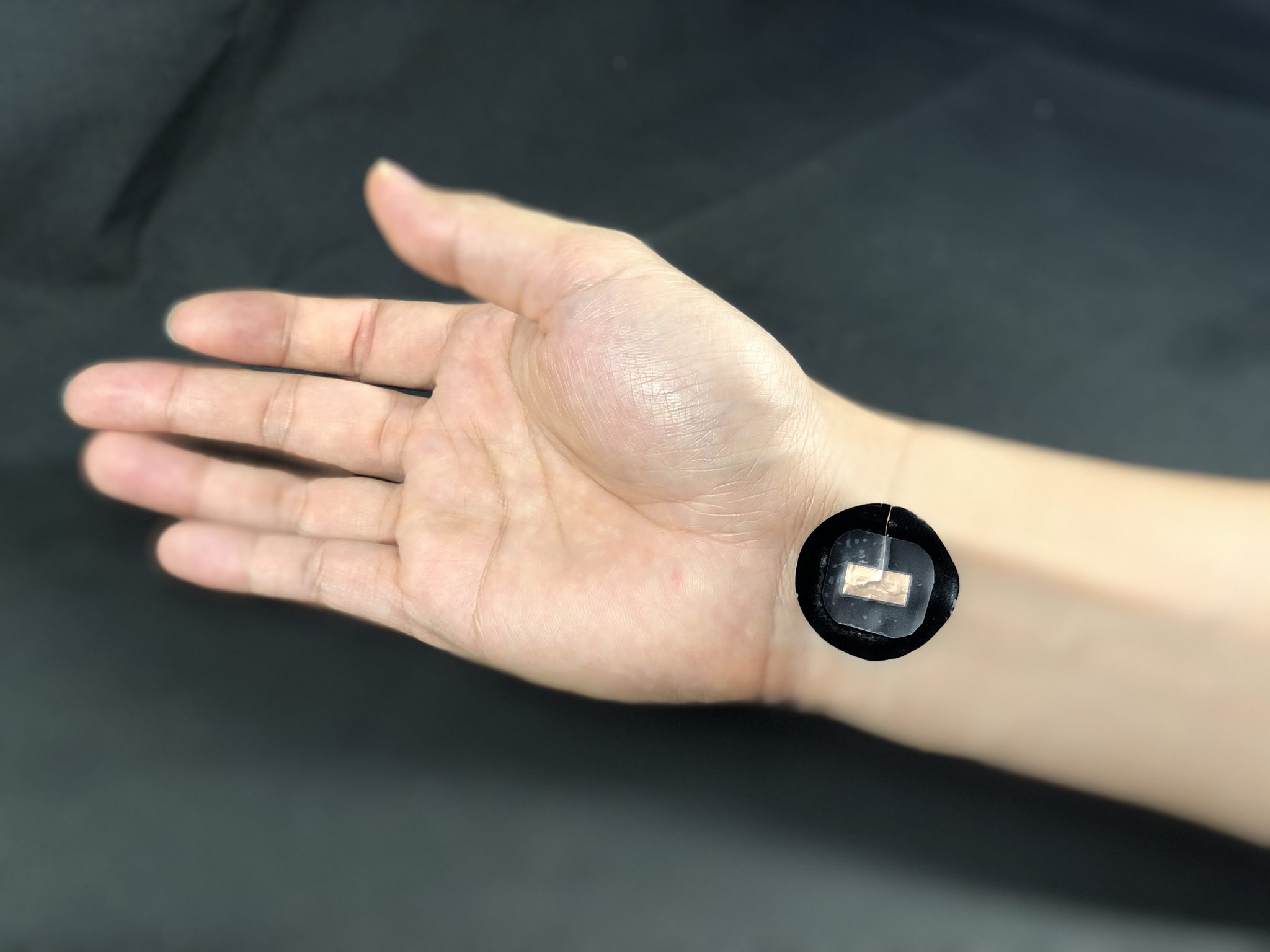
The way we move and think depends on millions of neurons that carry electrical signals racing through our nervous system.
Detecting these bioelectrical signals - also known as biosignals - through electrodes placed on the skin allows doctors to better diagnose patients and for machines to be controlled with gestures or even with thought.
Conventional "wet" electrodes rely on a gel or liquid to detect biosignals, but these dry out over time and give lower quality signals when the patient is moving. For years researchers have been trying to make "dry electrodes" to solve these issues.
Now NUS Engineers have discovered a flexible, adhesive and conductive organic polymer ideal for use as dry electrodes, and have demonstrated them working in a real setting for the first time.
The research was a cross-department collaboration involving researchers from the Department of Materials Science and Engineering (MSE) and the Department of Biomedical Engineering (BME).
Dr Zhang Lei (MSE), PhD candidate Kirthika Senthil Kumar (BME), Associate Professor Ouyang Jianyong (MSE), Assistant Professor Ren Hongliang (BME), and Associate Professor Dr Raymond Seet Chee Seong (Medicine) recently published their findings in a paper in Nature Communications. Their breakthrough opens the door for durable electrodes that work well even in motion, and which are suitable for long-term patient monitoring.
What are biosignals?
Bioelectrical signals or biosignals are electrical signals naturally produced within the human body. These can be produced by neurons firing in our brain, nerves transmitting signals through our body, or motor neurons controlling our muscles. Doctors measure biosignals as part of patient monitoring and diagnosis.
Three major types of biosignal measurement are electrocardiography (ECG) measuring heart activity, electromyography (EMG) measuring muscle activity, and electroencephalography (EEG) measuring brain activity. For each type of measurement, conductive electrodes are attached to the skin which sense changes in bioelectrical activity.
A novel, tailored material
The new polymer was created in Prof Ouyang's material science lab. It was a result of the research group's years of experience studying a conductive organic polymer called PEDOT:PSS.
To make it stretchable and adhesive - two desirable properties for biomedical applications - Dr Zhang mixed liquid PEDOT:PSS with two other chemicals and let a thin layer of the mixture solidify. The end result was a new stretchable, adhesive polymer, which they named PWS.
Recognising the potential of this new material, Prof Ouyang got in touch with Prof Ren from BME. Prof Ren's doctoral student, Kirthika Senthil Kumar, took up the job of designing and conducting experiments to evaluate PWS as a dry electrode for biosignal monitoring.
First successful dry electrodes

As "dry electrodes", the PWS electrodes hold several advantages over traditional wet electrodes.
"For commercial wet electrodes like gel electrodes, the gel eventually dries out, and there are motion robustness problems for long-term recordings," Kirthika says. "Once the gel dries out, the signal degrades, and you have to replace the electrode."
On the other hand, the dry PWS electrodes have no gel component, and no adhesives are needed to attach it to the patient's skin. They also do not wear out over time, allowing for long-term reuse with consistent signal quality. "After our electrode is removed, you can just wipe it with a cotton swab or an alcohol swab and put it back again," Kirthika says.
Clinical applications
The BME team ran tests on the electrodes in their lab and in the field. In the lab, the electrodes reliably captured muscle signals in an EMG, even when the subject's arm was vibrating. They also successfully performed a basic EEG with specially-shaped PWS electrodes.
With the help of Associate Professor Dr Raymond Seet of the Faculty of Medicine, the PWS electrodes were used to monitor patients in a clinical setting over an extended period.Used for an ECG, the electrodes were sensitive enough to detect tiny changes in the heartbeat of a patient diagnosed with atrial fibrillation (irregular heartbeat). In an EMG, the electrodes were used to measure the muscle strength of a patient with muscular dystrophy.
The testing demonstrated the PWS electrodes' suitability for long-term patient monitoring, a task that existing wet electrodes are less suited for.
Vast potential
As a flexible conducting organic polymer, the researchers say PWS has great potential in the field of biomedical science.
Because it is dry and robust, it can be used to make durable, long-lived products, while its ability to be cast into different shapes allows it to be adapted for different applications.
The dry PWS electrodes can see future application in patient diagnosis, physiotherapy, and rehabilitation, especially for long-term patient monitoring. They may also be used to enhance human-machine interfaces - another topic of study for the BME team, who have already used them to control a robotic arm with just arm gestures.





